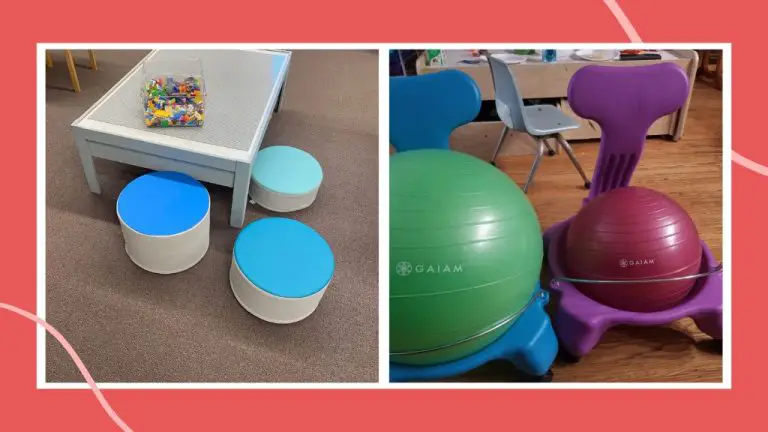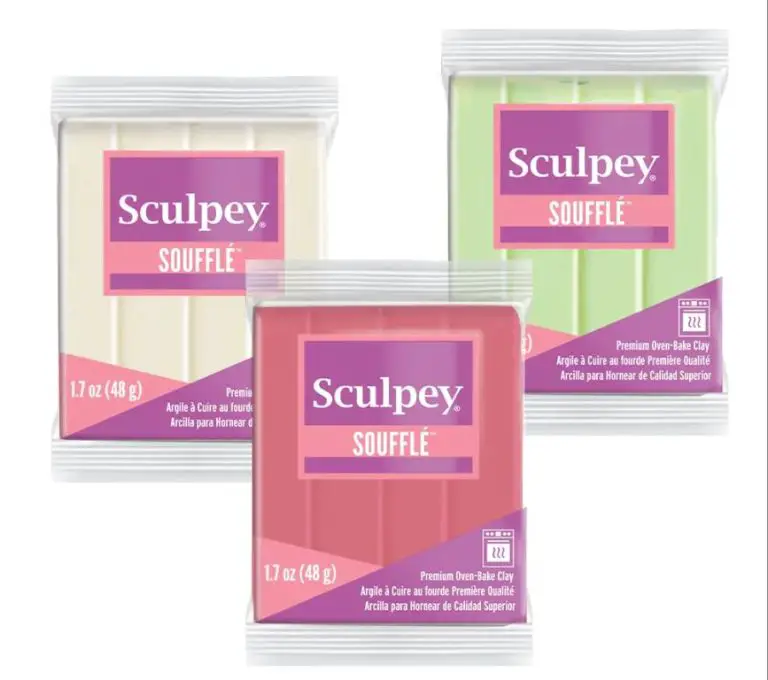What Can We Make From Foam Clay?
Foam clay, also known as polymer clay, is a modeling material that air-dries at room temperature. It typically contains polyvinyl chloride, plasticizers, and coloring agents. Unlike traditional clay that requires firing, foam clay hardens as the plasticizers evaporate over time.
Foam clay has several advantageous properties compared to other types of clay:
- Does not require baking or firing to harden, it air dries at room temperature
- Very lightweight and easy to handle
- Smooth, doughy texture makes it easy to mold and shape
- Holds fine detail well for sculpting
- Available in a wide variety of colors
- Does not dry out quickly while working with it
The main differences between foam clay and pottery clay are that foam clay is a plastic-based product that cures at room temperature, while pottery clay requires high heat firing in a kiln to permanently harden. Foam clay is also lighter, easier to condition, and available in many colors.
Sculptures and Figurines
Foam clay is a versatile material that lends itself well to sculpting detailed figures and objects. One of the most popular uses of foam clay is to create human and animal sculptures. The lightweight texture makes it easy to sculpt intricate details like faces, clothing, fur, scales, etc. Foam clay holds its shape nicely so you can create sturdy standing sculptures.
Fantasy creatures like dragons, unicorns, and fairies are fun to sculpt with foam clay. Let your imagination run wild as you form whimsical figures. Add painted details when your sculpture is complete to really bring it to life. Creating your own original fantasy sculpture makes for a unique decoration or gift.
Foam clay also works great for sculpting miniature decorative pieces like vases, bowls, and figurines. These types of decorative sculptures make lovely gifts and home accents. The finished foam clay piece can be left natural or painted with acrylics. Small sculptures are portable so you can display them around your home or give them as gifts.
Jewelry
Foam clay is a versatile material that can be used to create all kinds of jewelry pieces. It is lightweight and easy to work with, making it ideal for pendants, beads, charms, earrings, rings, brooches, and more. The finished foam clay jewelry can be painted, glazed, or left natural. Here are some ideas for using foam clay to make jewelry:
Pendants and Charms: Handmade pendants and charms are simple to sculpt from foam clay. Make focal beads by shaping the clay freehand or press it into molds. Let your imagination run wild with shapes like hearts, stars, animals, initials, symbols, and mini landscapes. Foam clay holds fine detail well for creating patterned textures too.
Beads: Roll balls, tubes, cubes, teardrops or unique shaped beads. Make beads in any size from tiny accents to focal beads over 1 inch. Take inspiration from nature, like stone and crystal shapes. Use cutters and plungers to make uniformly sized and shaped beads fast.
Earrings: From simple studs to dangling designs, earrings come in endless shapes and sizes. Sculpt free-form geometric and nature-inspired shapes, flowers, animals, abstracts or any other earring design you can dream up. Make matching pairs easily by pressing the foam clay into earring molds.
Rings: Rings are quick and easy to make by rolling a snake of foam clay into a band, securing it with liquid clay. For wider bands, roll a sheet and cut strips to the desired width. Add interest by sculpting the band into braided, twisted or carved textures.
Brooches: Brooches make a stylish embellishment for jackets, bags, hats and more. Sculpt pins in any shape from circles to snowflakes. Add texture by pressing in designs or using rubber stamps. Apply liquid clay to attach pin backs.
The options are endless when making jewelry with foam clay. Let the clay harden, then paint or glaze to finish. The lightweight nature makes foam clay jewelry comfortable to wear while adding artful style.
Home Décor
Foam clay is a versatile material that can be molded and shaped into beautiful decorative pieces to liven up any room in your home. From bowls and vases to cups, boxes and coasters, foam clay allows you to create customized home accents with ease.
Bowls and vases made from foam clay make excellent additions to coffee tables, shelves or countertops. These decorative receptacles can be sculpted in any shape and size. Add interest by imprinting textures, cutouts, or dimensional shapes. Foam clay bowls and vases can be left natural or painted in any color to match your home’s style.
Cups and mugs crafted from foam clay make great gifts and can be customized with names, monograms or designs. These pieces are lightweight yet sturdy. Create a set of foam clay cups or mugs in different colors and styles for an eclectic look. Use them to hold utensils in the kitchen,office supplies at a desk, or pens and pencils in a craft room.
Boxes and containers made from foam clay provide beautiful storage solutions while doubling as décor. Adorn them with painted designs, textures, rhinestones, or other embellishments. Foam clay boxes look lovely on shelves, dressers, nightstands, and more. Make a jewelry box, trinket box, keepsake box or any size container you need.
Coasters made from foam clay protect furniture from drips and condensation. Sculpt them in round, square or fun freeform shapes. Add cork backing for insulation. Personalize coasters with monograms, names or designs for a custom look. Foam clay coasters can be styled to match any décor.
With foam clay’s versatility and your creativity, you can fashion one-of-a-kind home accents to personalize your space.
DIY Crafts
Foam clay is an incredibly versatile material that lends itself well to all kinds of DIY craft projects. Here are some of the most popular DIY crafts you can make with foam clay:
Magnets – Make custom refrigerator magnets by shaping foam clay into your desired shape and attaching a magnet on the back before baking. You can make magnets in any shape from animals to food items.
Ornaments – Foam clay is perfect for making lightweight Christmas tree ornaments. Sculpt shapes like snowmen, trees, Santa, reindeer, stars, angels, etc. Poke a hole before baking to thread a ribbon through for hanging.
Wall Hangings – Create unique 3D wall art and hangings by sculpting shapes, words or designs out of foam clay. Add decorative elements like beads, glitter or sequins before baking.
Wreaths – Make wreaths for any season by rolling foam clay into ropes, balls or other shapes and assembling them on a wreath form before baking.
Frames – Give plain frames a clay makeover by adding geometric shapes, flowers or other designs around the edges. Or fill the frame with baked clay tiles or scenes.
Candles – Dress up plain candles by making decorative clay elements like flowers, animals, shapes or beads and attaching them around the base of the candle before baking.
Decorations – Let your creativity run wild making all kinds of decorative pieces like vases, boxes, bowls, figurines, tiles and more. The possibilities are endless!
Kids’ Projects
Foam clay is an incredibly versatile material that allows kids to let their imaginations run wild. It’s soft and malleable, making it easy for little hands to shape, yet it’s strong enough to hold its form for playtime. Kids can mold foam clay into all sorts of fun creations.
Animals are always a popular choice. Kids can shape foam clay into safari animals like elephants, giraffes, lions, and zebras. Farm animals like cows, pigs, chickens, and horses are fun too. And of course, dinosaurs and other prehistoric creatures capture kids’ fascinations. The textures of foam clay are great for sculpting fur, scales, feathers, and other animal details.
Action figures and dolls are another way for kids to build their own toy worlds. They can craft superheroes, princesses, knights, wizards, fairies, robots, mermaids, and more. Foam clay holds its shape nicely for playing with these creations. Kids can also make fun accessories like swords, magic wands, vehicles, furniture, and other props.
Pretend playfood is always a hit, as kids can create pizza, tacos, sushi, cupcakes, and anything else they love to eat. The colorful clay looks just like the real food. Building blocks are also great for open-ended construction and imaginative play. With foam clay, kids can make exactly the building pieces they need.
Foam clay keeps little hands busy for hours while sparking creativity. The projects kids can make are endless!
Miniature Scenes
Foam clay is perfect for creating miniature scenes like tiny landscapes, fairy gardens, model trains, and dioramas. Its lightweight and malleable texture makes it easy to sculpt detailed miniatures by hand or press it into molds. The clay holds its shape nicely when dry, making it ideal for constructing miniature buildings, trees, bridges, pathways, furniture, and figurines to populate your tiny world.
Kids love using foam clay for model train layouts and tiny towns, pressing out roof shingles, bricks, and cobblestone pathways. Adults may enjoy crafting fanciful fairy gardens with miniature mushrooms, animals, gazebos, and stepping stone pathways. Foam clay is an inexpensive material for architects and hobbyists to mock up scale models of buildings, towns, or natural scenery.
To add rich detail, foam clay scenery can be painted once dry. Small decorative items like pebbles, moss, and flowers can be embedded into the clay. With a little creativity, foam clay can construct tiny worlds limited only by your imagination.
Bakeable Projects
One of the unique properties of foam clay is that it can be baked after sculpting to harden it into a permanent shape. This opens up possibilities for creative bakeable projects using foam clay.
Cake toppers are a popular bakeable craft made from foam clay. You can sculpt cute figurines, letters, numbers, or shapes to decorate cakes for birthdays, weddings, holidays, and other special occasions. Let your imagination run wild to match the theme of the cake. Sculpted foam clay creations make for edible yet personalized cake decor.
Foam clay pendants for necklaces and other jewelry pieces also work beautifully when baked. Simply form the desired shape, bake until hardened, allow to cool fully, then glue on a jewelry bail or loop. Kids can even make their own personalized jewelry gifts using this technique.
Refrigerator magnets are another fun foam clay project, especially for kids. Sculpt any mini sculptures, letters, shapes or figures, bake, then glue on magnet strips. These make great accessories for the fridge and allow kids to show off their artistic creations.
The best part is that once baked, foam clay hardens into a lightweight, durable material that lasts for years. So bake up some creative projects and enjoy your foam clay crafts for holidays, gifts and daily decorative use.
Stamping and Molds
One fun way to decorate foam clay creations is by using stamps, molds, and texture mats. These tools allow you to easily imprint designs onto your clay without needing artistic talent. Stamping is great for adding patterns, textures, and shapes.
There are many different stamps you can buy, like floral motifs, letters and numbers, animal prints, and more. Press the stamp firmly into the clay to get a clear impression. You can stamp all over the clay or just in certain areas as accents. For geometric patterns, bricks, tiles, etc., use texture mats. Simply press the clay down onto the mat.
Molds create 3D shapes like flowers, leaves, butterflies that you can attach onto projects. To use molds, press a ball of clay firmly into the mold cavity to pick up all the detail. Let it dry before gently removing it. Combining stamping, molds, stencils, and freehand texturing gives you endless options for customizing foam clay creations.
Finishing and Painting
Once your foam clay sculpture or project is complete, you’ll likely want to apply some finishing techniques to smooth, seal, and decorate the surface. Here are some of the most common finishing methods used with foam clay:
Smoothing
Foam clay can be prone to fingerprints and imperfections in the surface. To smooth it out, you can use a few different tools:
- Sandpaper – Fine grit sandpaper can be lightly rubbed across the surface to smooth out fingerprints or ridges.
- Steel wool – Ultra fine steel wool is another gentle abrasive that can blend and soften the clay surface.
- Alcohol or water – Using a small brush or paper towel, you can gently smooth the surface with some alcohol or water. Let fully dry before continuing.
Baking
Some foam clay brands recommend baking the finished sculpture to further harden and cure the material. Follow package instructions for bake times and temperatures. Baking can cause some slight color change and shrinking, so test a small piece first.
Varnishing
Applying a protective sealant like polyurethane, mod podge, or UV resin can help foam clay projects become more durable. Multiple thin coats allow the varnish to fully soak in. Let dry fully between coats.
Acrylic Paint
Once sealed, acrylic craft paints work beautifully on foam clay. You can hand paint designs, use sponges for textures, or stamp patterns. Allow paints to dry fully before sealing again with a varnish.




